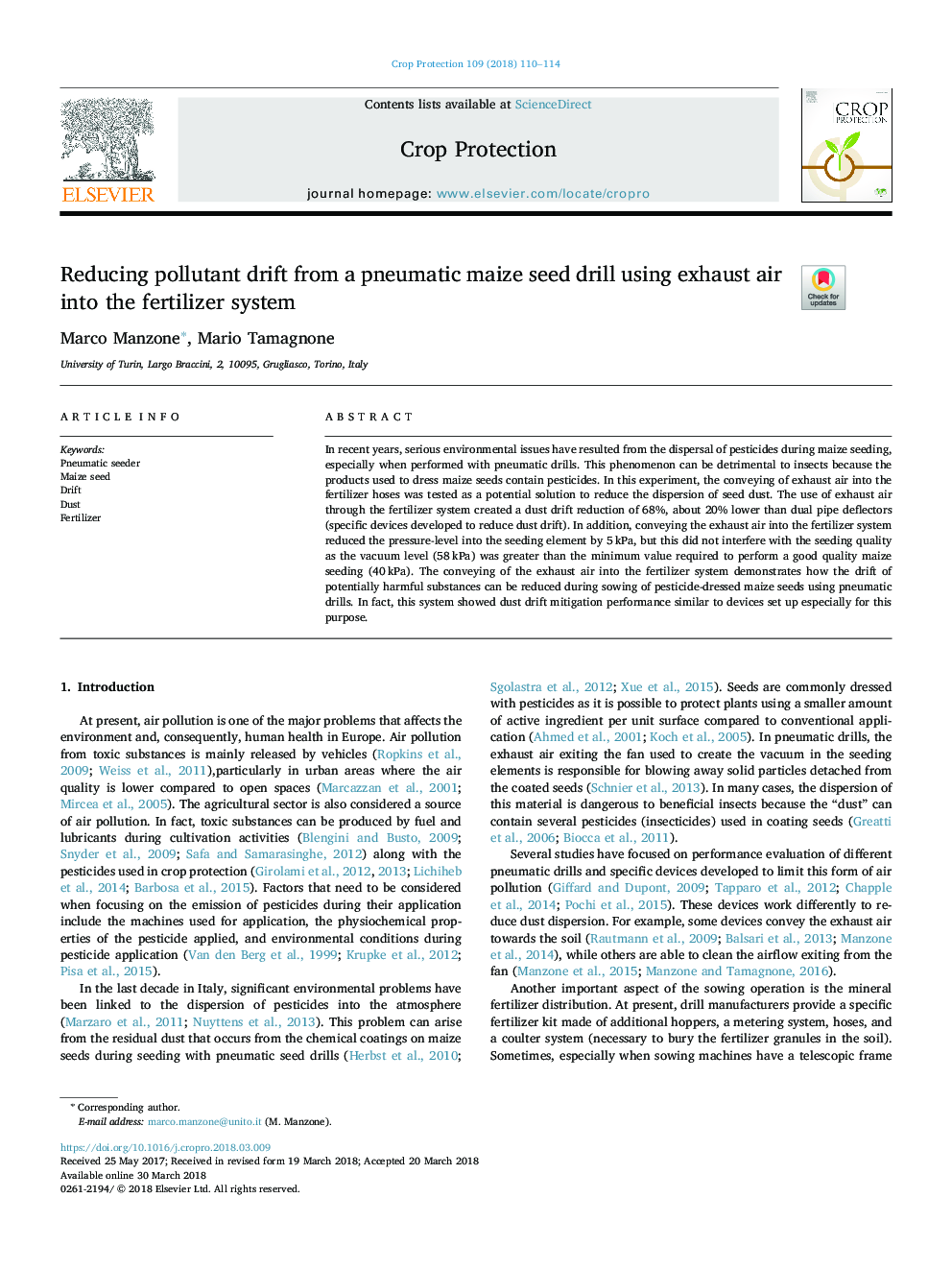| Article ID | Journal | Published Year | Pages | File Type |
|---|---|---|---|---|
| 8878146 | Crop Protection | 2018 | 5 Pages |
Abstract
In recent years, serious environmental issues have resulted from the dispersal of pesticides during maize seeding, especially when performed with pneumatic drills. This phenomenon can be detrimental to insects because the products used to dress maize seeds contain pesticides. In this experiment, the conveying of exhaust air into the fertilizer hoses was tested as a potential solution to reduce the dispersion of seed dust. The use of exhaust air through the fertilizer system created a dust drift reduction of 68%, about 20% lower than dual pipe deflectors (specific devices developed to reduce dust drift). In addition, conveying the exhaust air into the fertilizer system reduced the pressure-level into the seeding element by 5â¯kPa, but this did not interfere with the seeding quality as the vacuum level (58â¯kPa) was greater than the minimum value required to perform a good quality maize seeding (40â¯kPa). The conveying of the exhaust air into the fertilizer system demonstrates how the drift of potentially harmful substances can be reduced during sowing of pesticide-dressed maize seeds using pneumatic drills. In fact, this system showed dust drift mitigation performance similar to devices set up especially for this purpose.
Keywords
Related Topics
Life Sciences
Agricultural and Biological Sciences
Agronomy and Crop Science
Authors
Marco Manzone, Mario Tamagnone,
